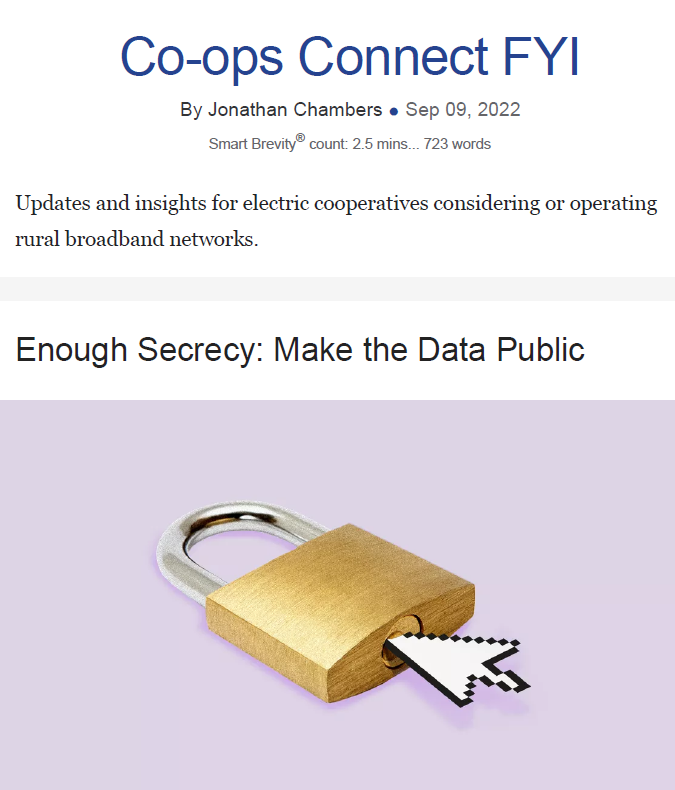Enough Secrecy: Make the Data Public
September 9, 2022
Like many in Washington, I have held security clearances at various times in my career.
- Thirty-five years ago, I received clearance to view information designated as Secret.
- Two years later, I received a Top Secret clearance, which included access to certain Sensitive Compartmented Information.
- I was read into programs, including covert operations, which I have never discussed nor ever plan to.
- For a time, I even held a Q clearance.
This is not a piece about the search for documents at Mar-a-Lago.
I have a very different point to make:
1. I understand the importance of protecting secrets.
2. I also understand when people and companies and institutions hide behind secrets.
The bottom line:
Broadband data is not the stuff of intelligence gathering. Its release will not reveal sensitive sources and methods. No lives are at risk.
It is long past time for public officials in state and federal agencies to release the data that is owned by the public and/or being used to make broadband decisions that affect the public.
Let’s look at two recent illustrations.
East Carroll Parish
You may remember East Carroll Parish, Louisiana, a persistent poverty
parish in one of the poorest parts of the country. The residents of East Carroll are also poorly served by telecommunications companies.
- But in late July, the residents of East Carroll Parish were told by the Governor of Louisiana, who had flown by helicopter to the parish, that a state broadband grant had been awarded.
- A fiber-optic network would be built throughout the parish.
Yes, but:
Several weeks later, in a bizarre post-award protest, Cable One claimed it serves East Carroll Parish. Thus, the grant was withheld by the state broadband office.
- Cable One’s protest is secret (proprietary).
- Its claims of service are secret (proprietary).
- Whatever supporting data it has are apparently a secret.
Why it matters:
The residents of East Carroll Parish have no way of rebutting the secret challenge, since the broadband office will not make the data public.
In the past year, we have seen an increase in these sorts of challenges.
- No data concerning these challenges is made public.
- There is no opportunity to engage in a meaningful inquiry concerning speed tests, jitter, location of DSLAMs or cable aggregations points, the radio frequencies used for upload bandwidth, or any number of issues that affect rural coax and copper networks.
Instead, all we get to see are 11th hour protests containing bald, tendentious assertions, made to delay or deny awards to deserving communities.
The bottom line:
I don’t blame the companies who take advantage of the rules.
I blame the rule makers.
Here’s a new rule: Non-public data in a broadband challenge shall not be considered valid.
The FCC’s Location Fabric
Why it matters:
The location fabric is proprietary.
- And (this is hard to believe), if you challenge the location fabric, the FCC will claim ownership of your challenge and then make it proprietary.
Congress appropriated $65 million under the DATA Act for the FCC to produce a new, more granular broadband map.
But:
- The public does not own the data.
- The public does not have access to the data.
- The licenses to gain access to the data are extremely limited.
- Challenges to the data are extremely limited.
But wait. The broadband data collection, which will overlay the location fabric, also will not be made public.
- Needless to say, it is extraordinarily difficult to challenge secret data.
The Big Picture
This is the very data being used to allocate $42.45 billion in BEAD program funding.
$65 million of public funds is being used to produce maps that will determine how to allocate tens of billions for critical infrastructure.
But you don’t have clearance to see it.
